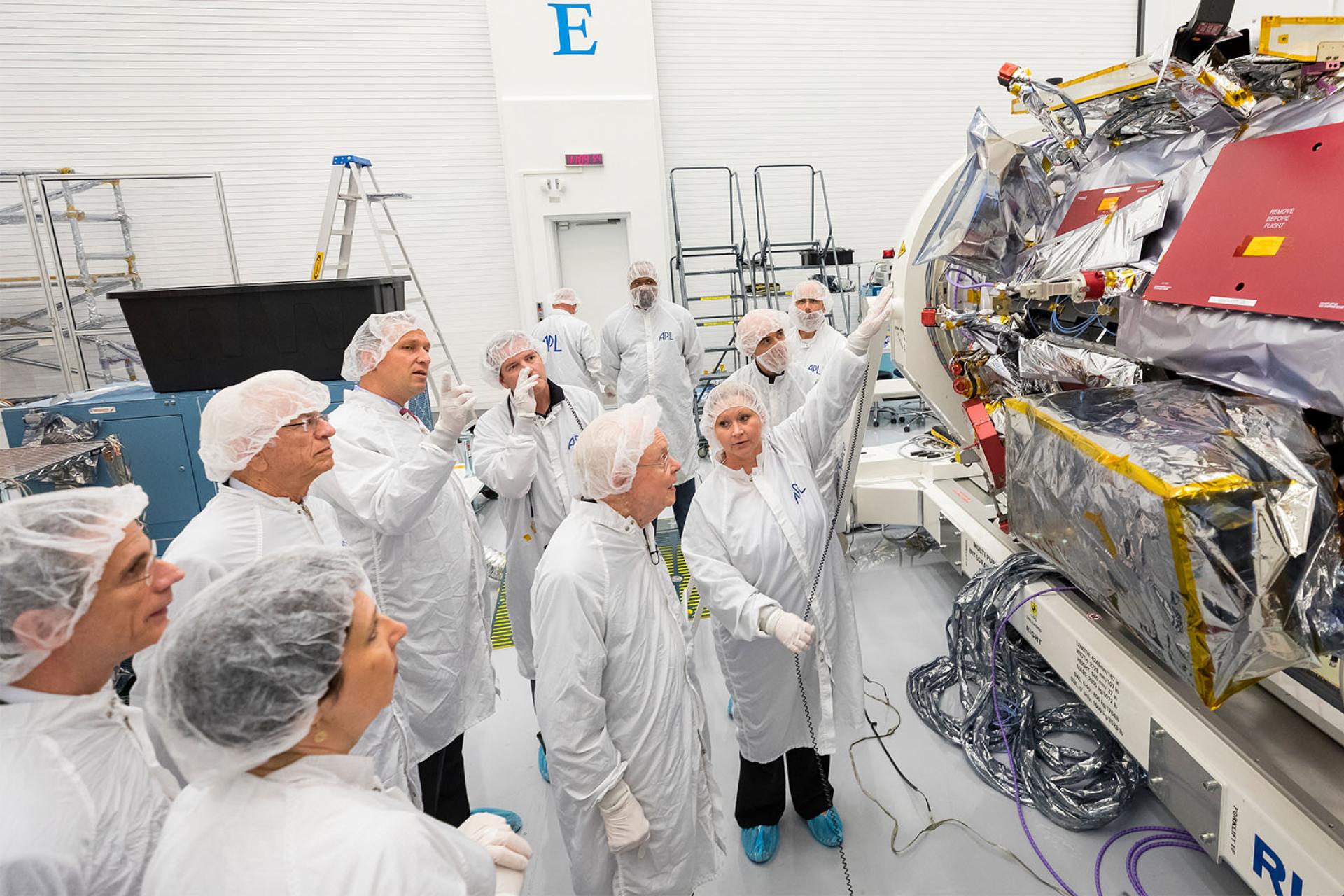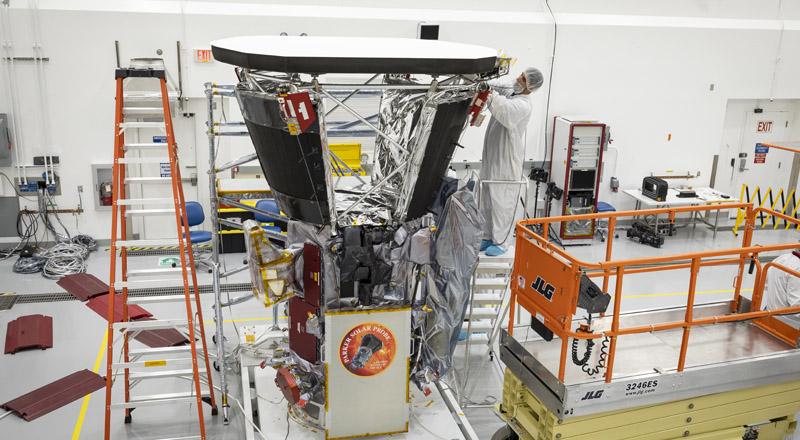News
The Coolest, Hottest Mission to the Sun
In August 2018, NASA’s Parker Solar Probe launched to space, soon becoming the closest-ever spacecraft to the Sun. With cutting-edge scientific instruments to measure the environment around the spacecraft, Parker Solar Probe – designed, built, and managed for NASA by the Johns Hopkins Applied Physics Laboratory – has completed six of 24 planned passes through never-before-explored parts of the Sun’s atmosphere, the corona.
And this bold mission of discovery is just getting started.
“We’ve learned a great deal about our star in the past several decades, but we needed a mission like Parker Solar Probe to go into the Sun’s atmosphere,” said Nour Raouafi, Parker Solar Probe project scientist at APL. “It’s only there that we can really learn the details of these complex solar processes. And what we’ve learned [so far] has changed a lot of what we know about the Sun.”
Taking the Heat
Making Parker Solar Probe possible are key technologies developed by APL. A revolutionary 4.5-inch-thick (11.43 centimeters) carbon-composite thermal protection system – or heat shield – keeps the spacecraft and most of its instruments at a comfortable 85 degrees Fahrenheit, even as the spacecraft plunges deeper into the Sun’s fiery corona.
The solar-powered spacecraft houses active water-cooled solar arrays (a first in space) that retract and extend as Parker Solar Probe swings toward or away from the Sun, making sure the panels stay at appropriate temperatures while providing the necessary power to operate the spacecraft and instruments autonomously. At its closest passes the spacecraft must survive temperatures of up to 2,500 degrees F, and solar intensity of about 500 times what we experience here at Earth on the hottest day of the year.
On each orbit, Parker Solar Probe sets records for speed and solar distance. On its last close approach to the Sun (called perihelion) on Sept. 27, the spacecraft came within 8.4 million miles (13.5 million kilometers) of the Sun’s surface — less than one-tenth of the distance between Earth and the Sun — while reaching a top speed of 289,927 miles per hour (466,592 kilometers per hour). The probe will ultimately dip inside 4 million miles of the solar surface, while moving 430,000 miles per hour.
The Sun-Earth Connection
The information Parker Solar Probe has already uncovered about how the Sun constantly ejects material and energy will help scientists retool the models we use to understand and predict the space weather around our planet and understand the process by which stars are created and evolve.
“Observing the Sun from up close, rather than from a much greater distance, is giving us an unprecedented view into important solar phenomena and how they affect us on Earth, and gives us new insights relevant to the understanding of active stars across galaxies” said Thomas Zurbuchen, NASA’s associate administrator for science. “It’s just the beginning of an incredibly exciting time for heliophysics with Parker Solar Probe in the vanguard of new discoveries.”




